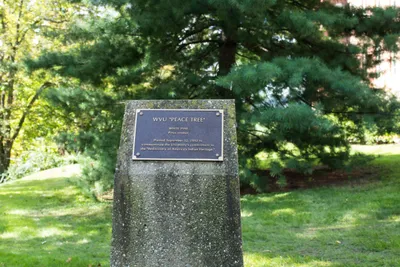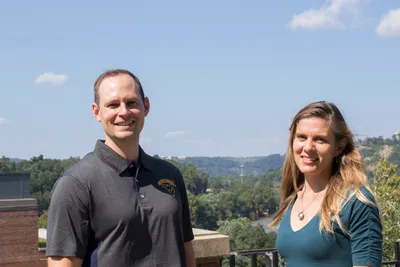Eberly News
Articles for the month of October 2018

Life without lead
WVU anthropologist researches lead contamination in Uruguay

WVU Native American Studies Program to host 26th anniversary of the Peace Tree Ceremony Oct. 30
The Native American Studies Program at West Virginia University welcomes the public to its 26th anniversary of the Peace Tree Ceremony on Tuesday, Oct. 30 at 11:30 a.m. at the Peace Tree, located between Martin and Elizabeth Moore halls. The Mountainlair ballrooms will serve as a rain location for the ceremony.

Not ‘just for kids’: WVU communication studies professor researches the interactivity of video games
WVU communication studies professor researches the interactivity of video games

Is every neuron a unique snowflake? WVU biology student studies organizing principles of neuron diversity
WVU biology student studies organizing principles of neuron diversity

Air Force funds WVU research on morality in human-robot interactions
“The mediator between the head and the hands must be the heart,” says Maria, the working class advocate-turned machine in Fritz Lang’s 1927 film, “Metropolis.”

WVU researchers linking Clean Air Act to soil composition
A team of West Virginia University researchers are investigating the impact of the Clean Air Act on soil and tree growth in the eastern U.S.
WVU physics professor awarded 2019 Hans Christian Oersted Medal
A West Virginia University professor joins the ranks of luminaries Carl Sagan, Richard Feynman and Nobel laureates as the recipient of the prestigious Hans Christian Oersted Medal from the American Association of Physics Teachers.

WVU part of 10-university alliance improving diversity in STEM
West Virginia University continues to be part of a multimillion dollar effort across a 10-university alliance to support STEM education for underrepresented students in Appalachia.
Eberly College hires Julie Cryser as assistant dean for development
Julie Cryser, assistant dean of advancement for the Davis College of Agriculture, Natural Resources and Design at West Virginia University, has accepted a position as the assistant dean for development for the WVU Eberly College of Arts and Sciences.

WVU researchers focus on school-based healthcare in Appalachia
Hindered by access to high-quality healthcare, West Virginia children demonstrate some of the worst health outcomes in the nation.
